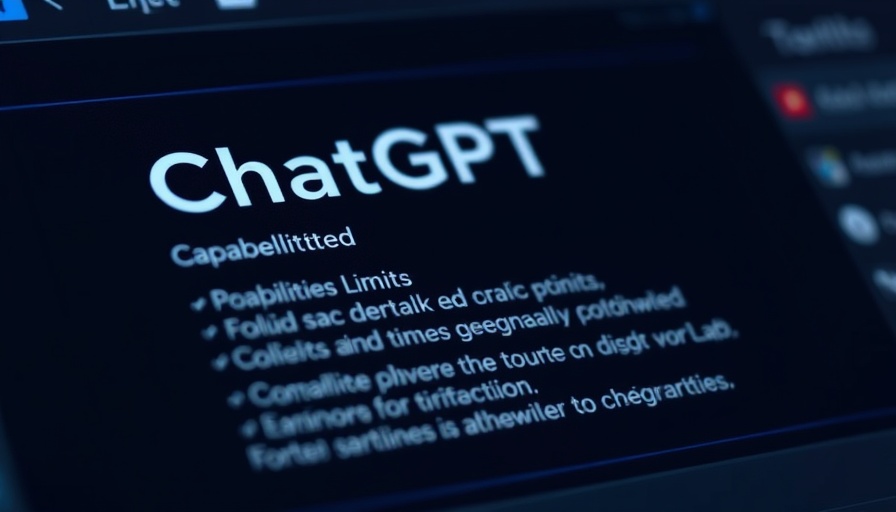
AI Reasoning: A Missed Opportunity for Decades
Noam Brown, the lead researcher in AI reasoning at OpenAI, has made a remarkable assertion: some reasoning models could have emerged as far back as 20 years ago if researchers had recognized the right algorithms and approaches. His comments came during a panel discussion at Nvidia's GTC conference, where he highlighted how human-like reasoning can significantly enrich AI capabilities.
Brown's perspective is particularly enlightening as he reflects on his experience at Carnegie Mellon University, where he worked on game-playing AI that could 'think' strategically rather than simply respond. His involvement in developing Pluribus, an AI that adeptly played poker against human champions, illustrates the transformation within AI methodology—from brute force to reasoning-based approaches.
The Power of Reasoning AI in Today's Context
The emergence of reasoning models comes at a crucial time when AI's relevance spans various fields. Traditional AI systems often struggle in domains requiring deep understanding, such as mathematics and science. Brown’s insistence on reasoning models emphasizes a revolution in performance and reliability. These advanced models, especially Brown's o1 from OpenAI, utilize test-time inference. By allowing additional processing time for modeling decisions, these systems can yield profound insights and enhance accuracy.
Academic Contributions vs. AI Lab Dominance
Brown raised an important question about the capability of academic institutions to engage with AI developments on the scale of laboratories like OpenAI. The growing disparity in technological resources has made it more challenging for universities to access the computational power necessary for extensive AI experiments. However, he addressed this concern by suggesting that academia could still thrive, particularly in areas like model architecture design and AI benchmarking—fields that do not require as much computing power.
This opens an avenue for impactful collaboration. Brown's recognition of potential partnerships between top-tier labs and academia reflects a shift; while AI research expands, the essential need for academic input remains significant. Brown mentioned, “The state of benchmarks in AI is really bad,” highlighting the need for research that can accurately assess AI models' performance based on relevant criteria.
Addressing Current Challenges in AI Benchmarking
Today's AI benchmarks often assess esoteric knowledge, failing to reflect real-world tasks. This disconnection can lead to misinterpretations of an AI model's capabilities, creating misinformation around its effectiveness. As the landscape of AI continuously evolves, benchmarking is a vital aspect that requires urgent attention. With academic insight, there is a unique opportunity to develop rigorous evaluation methods that better align with practical applications.
Political Context Surrounding AI Research Funding
Brown’s insights come against the backdrop of significant cuts to scientific grant-making, as highlighted by the Trump administration. Experts like Geoffrey Hinton warn that these reductions could jeopardize the progress of AI research in the U.S.—a trend that could have long-lasting implications for global AI competitiveness. Brown’s remarks remind us that even in a tightening funding environment, fostering collaborations between institutions might be key for sustaining innovation.
Looking Forward: The Future of AI Reasoning
The discussion instigated by Noam Brown opens up a wealth of possibilities for the future of AI. As reasoning models become further integrated into AI applications, their implications will be felt across various industries—from healthcare to finance. This shift towards reasoning may lead to smarter, more adaptable systems capable of addressing complex challenges that traditional models might falter on.
AI enthusiasts should look at these developments not just as technical advancements but as a cultural shift in understanding AI's potential. There’s a changing narrative that emphasizes thinking, creativity, and understanding in AI—not mere data processing.
This conversation is just beginning, and as we peel back the layers of AI reasoning, it will become increasingly essential to engage with these ideas thoughtfully and critically.
While you explore these new insights into AI reasoning, consider how these trends may affect future innovations and developments. Stay informed and involved in discussions that bridge technology with education, ethics, and society.
 Add Row
Add Row  Add
Add 




 Add Row
Add Row  Add
Add 

Write A Comment